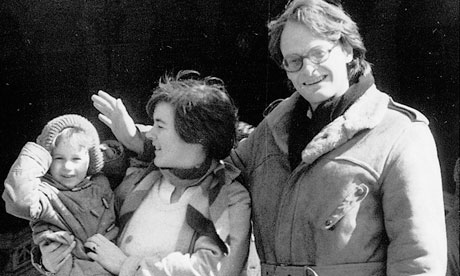
"Can a man who is warm understand a man who is freezing?" Patrick Cockburn quotes Solzhenitsyn's question in the preface to this account of his son Henry's schizophrenia. The ensuing shared narrative brings the reader closer to such an understanding than anything else I've read.
Patrick's voice provides the framework. Jan, Henry's mother, adds extracts from her diary. Both write with intelligence, lucidity and compassion. But the sections written by Henry himself in prose that has, as Patrick says, "a sort of radiant simplicity", make the book truly special.
Henry first broke down aged 20. He was rescued by fishermen from Newhaven estuary, sent to a mental hospital and put on suicide watch. Patrick, a foreign correspondent hard to contact in Kabul, had little inkling of impending trouble, though Jan had worries. Henry, an art student, dirty and disorganised, went barefoot, dismantled his phone, believed clocks controlled his life, and was arrested for climbing a railway viaduct. But Henry had always been original and rebellious. What happened next was unimaginably, terrifyingly different.
The icy swim was not a suicide attempt – almost the reverse. Henry experienced "a spiritual awakening". He saw a vision of a golden Buddha. He swam under orders: "I felt brambles, trees, and wild animals all urging me on. It was as if they were looking at me and I could feel what they thought." The "reality" of the visions was visceral. When a "giant worm" came down from the heavens, Henry thought he could cut himself on its scales.
Patrick had polio in childhood; he understood physical illness. He was dismayed, now, to find that in his ignorance of mental illness he was not alone. Treatment for schizophrenia "seemed to be at about the level of treatment of physical sickness a century earlier".
Full recovery happened, if at all, apparently spontaneously. Drugs controlled symptoms, but worked better for some patients than for others. And why would patients co-operate with drug therapy and endure side-effects when they didn't believe they were ill?
Henry was gentle , never aggressive, but when he "thought the leaves of ivy brushing against my skin were telling me to pull down my trousers", how could the public see him as unthreatening? Released from hospital, he returned to university, but quickly deteriorated. His bare feet got septic, his "attraction to detritus" became acute. A year after his first breakdown, the police apprehended him, naked, in a neighbour's garden. Jan made the crucial choice, giving consent to his legal constraint in a mental hospital.
Aged 10, Henry wrote a poem about a caged lion: "Alas, alas, I can't go back, they won't let me back to my habitat." Would he have been better off left to his own devices in his newfound "habitat" of wastelands and alleys and talking bushes? Dangerous, yes, but many people, especially young men, live dangerously. Patrick himself made a career reporting from the world's worst trouble spots. (He asked himself whether this contributed to Henry's instability.) But Henry was capable of sitting naked for two days in deep snow. Incarceration seemed the only way of protecting his life. Besides, the Cockburns still hoped hospital would provide a "cure". It's worth noting (for future reference, as so many of us experience mental illness at some point) that Marjorie Wallace of Sane warned against the assumption that private care was superior – "Whatever you do, stick to the NHS." The courteous and fair-minded Patrick feels that overall the NHS has done well by Henry. But while detained in "secure" units, Henry escaped 30 times. "Life in a locked ward is miserably boring, and it is instant bliss running away." Even more importantly, "the trees were calling me and I had to [escape]".
The teenage Henry smoked a great deal more cannabis than his parents realised. Evidence indicates that cannabis can trigger schizophrenia. "The worst thing about smoking weed when you are a kid is that you never really grow up," writes Henry. "Your life turns into a sort of haze." But within the "secure" unit, cannabis was easily available.
As for prescribed drugs, getting even one unwilling patient to take them is a full-time job. Clozaril helped, but Henry "was able to devote more time to not taking his medication than the doctors and nurses had available to get him to take it". Increasingly, Henry suffered episodes, "tormented by forces that usher me hither and thither. 'Don't go in there,' they say, 'come nearer.' I hear the seagulls call." Hope of alleviation led him to accept Clozaril. The resulting improvement got him out of the locked ward into a "halfway house".
Henry describes hospital life with a novelist's power. "'I can hear what you are saying,' said the psychiatrist as, with the stroke of a pen, he renewed my section over my protests."
But he's still not sure he's ill, and the trees still speak to him. His heroic parents recognise that they "will always have to cope with the consequences of his schizophrenia. But that . . . is what families are for." A happy ending being unavailable, "the best we can hope for is that the story continues". The Cockburns have done a tremendous service in making their story available in all its horror, tenderness and beauty.
Charlotte Moore's Hancox: A House and a Family is published by Viking.

